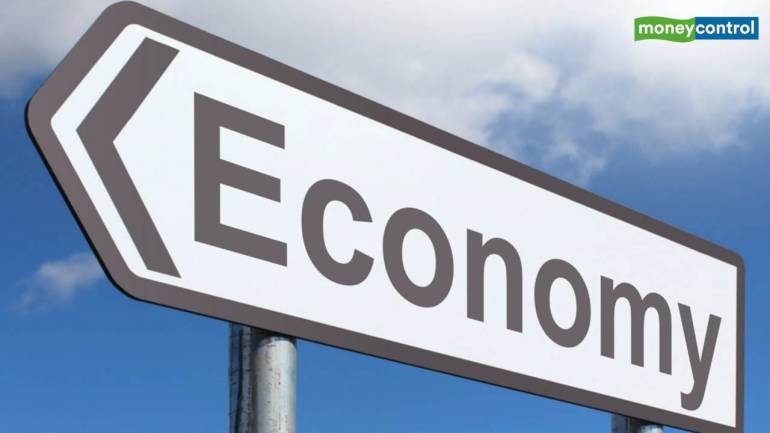There is little doubt that India is one of the biggest economies in the world, and with the ambitious target of becoming a $5 trillion economy by 2025, it’s set to grow even bigger.
Despite this economic power, however, the country’s share of global trade remains woefully low, contributing only 2 percent of total global exports in FY19.
India’s trade deficit has further worsened by ongoing trade tensions internationally and the slowdown of the domestic economy.
The Economic Survey 2018-19 noted that domestic consumption could only contribute in a restricted fashion to India’s GDP, because of a tendency for savings in the citizenry. As such, domestic demand has limited potential, acting as a multiplier only when high-income growth boosts consumption.
Hence, exports and international trade play an extremely important role in GDP growth. Capitalizing on this role through an aggressive export strategy requires high investments in large-scale facilities that can create high-quality goods to meet overseas quality standards.
The upcoming Foreign Trade Policy (FTP) for 2020-25, expected in the coming months, will be key to defining this strategy.
A Need for Change
The current FTP – in force for the last five years – relies heavily on incentives and subsidies to support and boost exports, such as those found under the Merchandise Exports from India Scheme (MEIS) and Services Exports from India (SEIS).
However, in recent rulings, the World Trade Organization (WTO) has ruled these schemes as invalid, following a challenge by the US. The WTO ruling states clearly that given that India’s per-capita-GNI (gross national income) has crossed $1,000 for three years in a row (2013-2015), the country is no longer allowed to offer export subsidies.
Indian exporters have been reliant on the incentives provided by these schemes for growth, leading to a culture of dependency and a lack of competitiveness.
Soon after taking charge earlier this year, Minister of Commerce & Industry Piyush Goyal highlighted the same, stating, “I do not think that any programme or ambitious scheme can run only on subsidies and government help. We have to move out of this continuous effort and demand...and make our industry truly competitive and self-reliant.”
The government has also indicated that it will not be challenging the WTO ruling, setting the stage for a new trade policy geared towards helping Indian exporters building competitiveness and self-sufficiency – the FTP 2020-25.
The Way Forward
Dr. Surjit Bhalla, the Executive Director for India at the International Monetary Fund (IMF), chaired a High-Level Advisory Group (HLAG) earlier this year which submitted recommendations in June 2019 on ways for India to triple its exports to over $1 trillion by 2025.
The recommendations including lowering the effective corporate tax rate, reduction in cost of capital, simplification of regulatory and tax framework for foreign investment funds, and specialized security products for fundraising for long-term infrastructure spends.
The Central government also needs to incentivize technology adoption across export sectors to build capability to meet evolving consumer demand and stringent quality requirements from overseas markets.
For example, the Ministry of Textile promotes an Amended Technology Upgradation Fund Scheme, which aims to provide credit-linked capital investment subsidies to exporters. The Scheme facilitates improvements in investment, productivity, quality, employment, exports and import substitution via technology upgrades in the textile industry.
Similar schemes in other sectors will help exporters, especially MSMEs, upgrade existing infrastructure with new-age technologies to reduce production costs and meet quality measures, leading to greater efficiency, growth and eventual job creation.
Yet another opportunity exists with India’s vast labour force. Despite the high numbers, many Indian workers are unskilled and hence unable to meet the requirements of a value-added global supply chain.
Hence, the government must look at leveraging existing schemes such as Skill India to train the under-skilled and promote their participation in export-driven industries such as textiles, gems and jewelry, and leather, among others.
Startups have also played a significant role in building maturity in the Indian trade ecosystem, particularly in the sectors of finance and logistics. These technology-reliant and data-driven companies have significant potential to promote exports and overall growth of the economy. Instead of the traditional antagonistic approach to startups in fintech and logistics, the government should acknowledge their contribution and reach out to them to build a new wave of public-private partnerships.
The new FTP should ideally include the above measures, as well as other ways to ensure that India’s exporters build capability and competitiveness at par with competitors from other export markets, instead of staying reliant on subsidies from the government.
Given the ongoing economic slowdown, self-reliance will be key to growth for India’s exporters in the coming months, and the new FTP will have a critical role to play in achieving this, and helping the country achieving its $5-trillion-economy target by 2025.
(The author is Co-Founder and Co-CEO at Drip Capital.)
Published On : 21-12-2019
Source : Money Control

